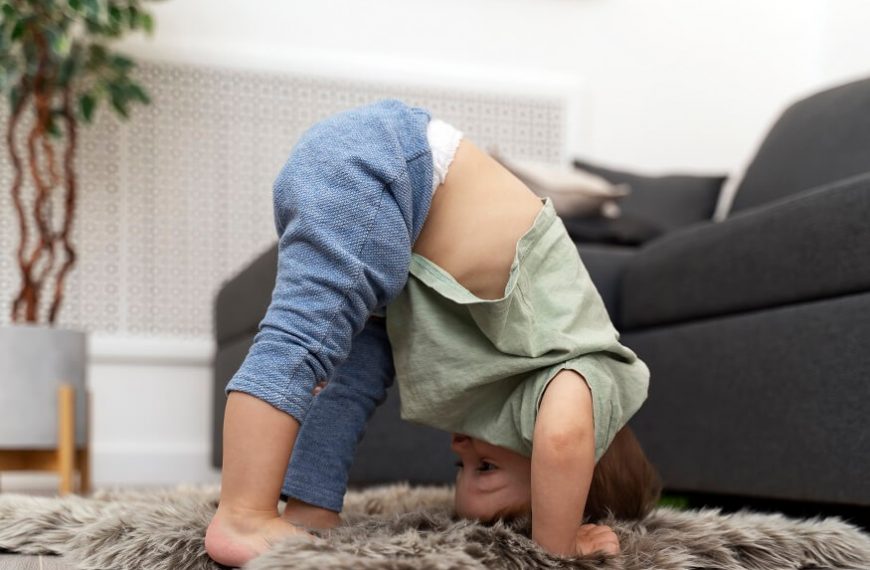There is a pressing need to create ways to promote physical activity, especially for kids, in today’s increasingly sedentary digital world. The animal walk exercise for kids is creative and enjoyable. This type of training, which is based on imitating the motions of various animals, not only improves physical strength and flexibility, but also adds some fun and creativity to exercises. Here’s a detailed look at how animal walks promote exercise and active play.
A Closer Look at the Animal Walk Exercise
The animal walk exercise is precisely what it sounds like. Participants imitate the locomotive methods of different animals. Each movement emphasis a distinct set of muscles and presents the body with a new set of obstacles, from the graceful stretch of the cat to the hopping of a frog or the scuttle of a crab.
Examples: On all fours, bear crawl while lifting your knees off the ground to go either forward or backward.
The quads, shoulders, and core are covered with this workout.
Frog Jumps: Start in a deep squat and leap forward, using the strength from the legs and glutes.
The Plethora of Animal Walk Exercise Benefits
The benefits of the animal walk exercise extend far beyond simple amusement. Here are some compelling reasons to incorporate them into your routine:
- Full-Body Workout
- Improved Coordination and Balance
- Enhanced Flexibility and Mobility
Unlike certain exercises that focus on specific muscles, animal walks engage multiple muscle groups. For instance, when doing a monkey shuffle (moving side to side in a deep squat), you’re activating your glutes, quads, hamstrings, and core.
Animal walks often require all three of the following – hand-eye coordination, strength, and balance. The crab walk, where one shuffles backward or forward on hands and feet with their belly facing upwards, is an excellent example of this. It is good for strengthening the arms, shoulder and core, while demanding coordination at the same time.
Movements like the snake slither or the cat stretch emphasize elongation, twisting, and stretching of the body, thus promoting flexibility and joint mobility.
Animal Walk Workout: Not Just for Children
While animal walks for kids are immensely popular due to their playful nature, they are by no means limited to the younger demographic. Adults can also benefit from an animal walk workout. It is a rather low-impact exercise, which means it is adaptable for any fitness level or fitness routine.
Example:
Elephant Walk: This involves bending at the waist, letting your arms dangle down as the trunk, and then walking forward. This move offers a good stretch for the hamstrings and back.
Engaging Young Ones: Animal Walks for Kids
Among the myriad ways to engage children in physical activities, animal walks for kids stand out as a clear winner. Here’s why:
- Foster Imagination and Creativity
- Promote Peer Interaction
- Learn While Moving
Children get the chance to unleash all their creativity by embodying various animals. Kids can immerse themselves into a brand new world of pretend play that comes with additional physical activity.
Animal walk exercises can be modified into group activities, which can help foster teamwork and increase social interactions with those around them.
Learning elements can also be infused into such exercises. For example, naming the animal, identifying its sounds, talking about its habitat and much more.
Example: While performing a kangaroo hop, educators can discuss the marsupial’s native land (Australia) and its unique way of carrying babies in a pouch.
The Origins and Evolution of Animal Walks
While the modern-day rendition of the animal walk exercise has seen a surge in popularity, the concept isn’t entirely new. One ancient practice that has used animal poses is yoga, such as cobra, downward facing dog and many more.
A Therapeutic Approach
There are many occupational therapists who have used animal walks for kids to improve their sensory issues or boost physical development and growth. By mimicking various animals, children can learn better motor skills and get more aware of how their body works.
For instance, the weight-bearing aspect of the bear crawl can help children develop upper body strength, while the lateral movements in the crab walk can assist with bilateral coordination (using both sides of the body simultaneously).
Beyond the Gym: Incorporating Animal Walks into Everyday Life
One of the undeniable animal walk exercise benefits is its adaptability. No fancy equipment or large spaces are needed. Here’s how you can seamlessly integrate animal walks into daily routines:
- Morning Rituals
- Fun Breaks During Study or Work
- Family Bonding Time
Start your day with a series of animal walks to energize the body and mind. Begin with the gentle stretch of the cat pose, gradually transitioning into more vigorous movements like the monkey shuffle.
Incorporate short animal walk workout sessions as breaks. These can be helpful, especially during an extended period of studying or work.
Instead of the regular evening walks, families can indulge in animal walk races in their backyards or local parks. It can also work wonders when it comes to making everyone get on their feet and perform physical activities while sharing an enjoyable moment.
Intensifying the Animal Walk Workout
For those seeking to elevate the challenge, adding variations can enhance the animal walk workout:
Example:
Lizard Walk with Push-Up: As you move forward in a lizard-like manner, incorporate a push-up every few steps. It works for your lower body and provides an intense upper body workout as well.
A New Age Fitness Trend Rooted in Timeless Principles
In essence, the rise of the animal walk exercise is steeped within the wisdom of the old ages. By engaging with nature and animals, we can connect to nature on a spiritual level. Moreover, the simplicity of the exercises are also a timely reminder that some of the best workouts have been around us for eons, waiting to be discovered once again. Whether it’s the strength of a bear or the agility of a monkey, there’s an animal spirit in each of us, ready to propel us towards better health and joy.
Conclusion
To summarize, the animal walk exercise is not just another trend in the fitness arena. It shows how we can use fun physical activities that appeal to both the old and the young, while improving our flexibility and coordination. The animal walk exercise has multiple benefits and can be easily added to any fitness routine.
At EuroKids, we believe that whether you’re an adult looking to diversify your workouts or searching for animal walks for kids to keep them active, this playful exercise regimen promises both fun and fitness in equal measure.















